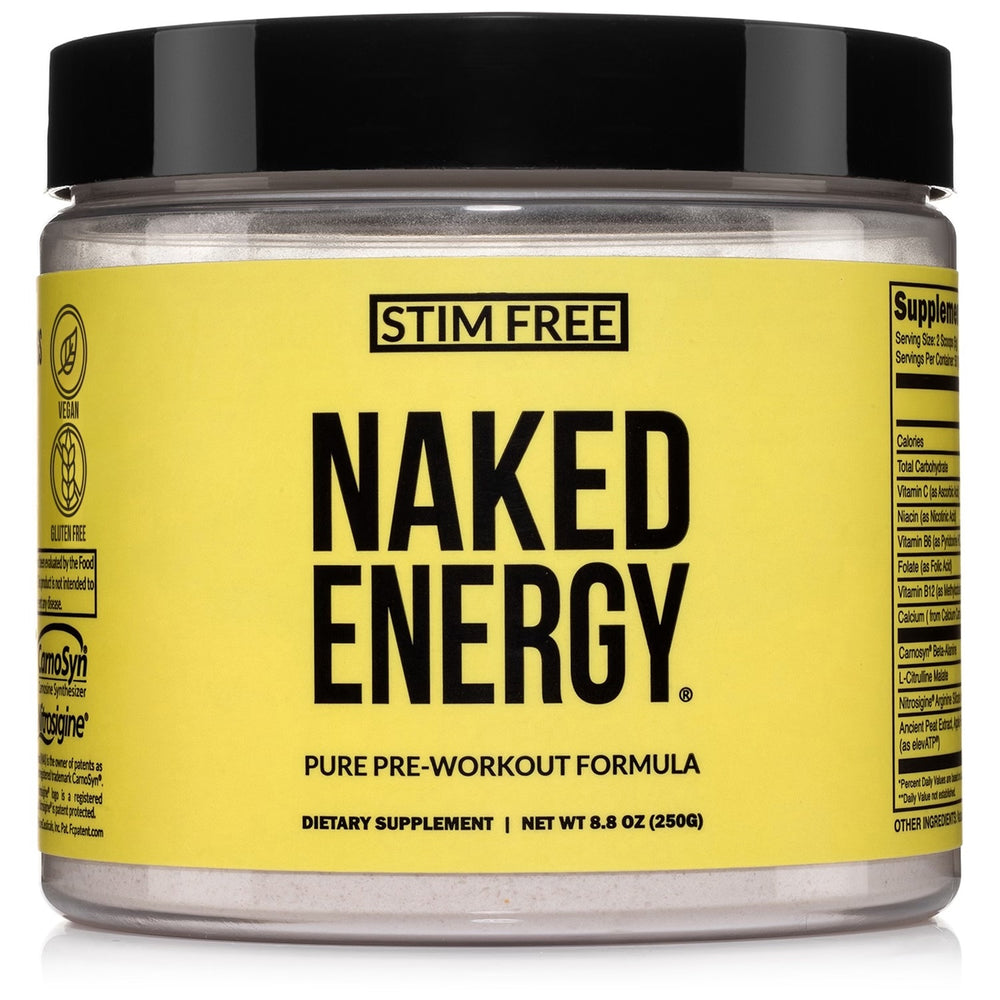Believe it or not, you don't need access to an expensive gym to build muscle. You can put together a dumbbell-only workout to build muscle across your whole body, without any fancy machines.
What you do need, along with a set of dumbbells, is a basic understanding of some key principles. These principles can be applied to any kind of workout to produce results.
Read on and we'll share these key principles along with a full-body dumbbell workout you can adopt for your own training plan.
How to Build Muscle (3 Key Principles)
Muscle is built through the application of three simple rules. To build muscle you must:
-
Progressively lift heavier and heavier weights
-
Provide your body with enough nutrients
-
Provide your body with enough rest to utilize those nutrients and repair damaged tissue
The first rule is formally known as progressive tension overload and was coined by U.S Army physician Thomas Delorme in the 1940s (1).
I like to call it the golden principle of muscle hypertrophy. It claims that in order for muscle to grow, it must adapt to a tension (or load) that it has not previously experienced.
And studies have shown that load is the single most important variable for stimulating muscle hypertrophy (2, 3). As long as you follow this golden rule, you will make progress. It's really that simple.
And you don't need any fancy equipment- a set of dumbbells will suffice. The latest fitness statistics show that the popularity of home workouts is on the rise, and dumbbells can be a key component of your home or garage gym.

Are Full Body Dumbbell Workouts Effective for Building Muscle?
Yes - you can build muscle by lifting just about anything, including dumbbells.
The only caveat is that you need a wide enough range of dumbbells to allow progressively increase the amount of weight you use and to lift as heavy as you can.
The fact of the matter is that access to a range of dumbbells (say 10-70 lbs) is sufficient enough to build muscle. Seriously. The only downside is that you may not have heavy enough dumbbells to effectively target certain muscle groups- namely, the quadriceps and hamstrings.
For this reason, we will train the lower body with high repetitions. The amount of variation in dumbbell exercises may surprise you.
To get an idea, check out Bodybuilding.com's exercise finder. On the left-hand side, under “Equipment”, select “Dumbbell”. You can then filter the results by muscle group.
Workout Description

This full body workout follows a common 3x/week training protocol and is designed for those who have access to a range of dumbbells and an adjustable workout bench. Before jumping into the split, let's look at a few important principles.
Intensity
Intensity refers to the amount of work done during each lift and is proportional to the amount of weight used (4). Make sure you perform each lift with maximum intensity! This means lifting as much weight as you can for the target rep range (discussed next).
For an extra boost in stamina, motivation, and focus, you can take an energy wellness shot before your gym session. Made with clean and pure ingredients, so you won't get jittery or crash after the workout.
Volume

Volume refers to the number of reps and sets performed during each workout season (4).
-
Reps: You should complete 6-8 reps for large muscle groups (chest, back, and shoulders), 8-12 reps for small muscle groups (biceps and triceps), and 15-20 reps for legs.
-
Sets: Our full-body dumbbell workout involves a total of 22 sets- 4 sets for each of the large muscle groups, and 3 for the small muscle groups. If you find that you can't complete all 22 sets within 45-90 mins, do 3 sets for each muscle group (for a total of 18 sets).
Frequency
Frequency refers to the number of training sessions that are performed each week (4). This workout involves 3 full-body workouts per week. If you are new to weightlifting, you may find that your body cannot recover quickly enough for each session. If this is the case, start with 2 workouts per week, then move up to 3 when you feel ready.
Remember the golden rule — progressively lift heavier and heavier weights!
For instance, if you're doing a dumbbell leg workout, and you complete 6 reps of goblet squats using 45 lbs, you should aim to hit 6 or 7 reps the following week and to increase the weight by 5 lbs the week after that.
Keep in mind that is merely a general guideline, and how quickly you progress will depend on a lot of factors including age and genetics.
Always Warm up

The workout below does not include warm-up sets. Before starting each exercise, do a warm-up set (with about ½ the weight you normally use) for as many reps as possible.
Form
We also want to note that you need to pay attention to your form when doing a full body dumbbell workout.
Performing these exercises with incorrect or sloppy form will result in sub-par gains or potentially injuries.
If you have the option of working with a trainer, do that. Otherwise, look up some guides on the correct form for the exercises you're about to do, and start with low weight while you get perfect your form, before increasing the weight you lift.
3 Day Full Body Dumbbell Workout Routine

Day 1
-
Dumbbell Bench Press - 4 sets of 6-8 reps
-
Stiff-Legged Dumbbell Deadlift - 4 sets of 15-20 reps
-
Standing Dumbbell Shoulder Press - 4 sets of 6-8 reps
-
One-arm Dumbbell row - 4 sets of 6-8 reps
-
Dumbbell One-Arm Triceps Extension - 3 sets of 8-12 reps
-
Dumbbell Bicep Curl - 3 sets of 8-12 reps
Day 2
-
Dumbbell Flyes - 4 sets of 6-8 reps
-
Dumbbell Hamstring Curl- 15-20 reps
-
Side Laterals to Front Raise - 4 sets of 6-8 reps
-
Straight-Arm Dumbbell Pull-Over - 4 sets of 6-8 reps
-
Tricep Dumbbell Kickback - 3 sets of 8-12 reps
-
Alternate Hammer Curl - 3 sets of 8-12 reps
Day 3
-
Incline Dumbbell Press - 4 sets of 6-8 reps
-
Dumbbell Goblet Squat - 4 sets of 15-20 reps
-
Arnold Press - 4 sets of 6-8 reps
-
Bent Over Two-Dumbbell Row - 4 sets of 6-8 reps
-
Seated Triceps Press - 3 sets of 8-12 reps
-
Concentration Curls - 3 sets of 8-12 reps
Additional Dumbbell Exercises to Build Muscle

The exercises above are by no means the only options to build muscle mass using only dumbbells.
If you want to change it up, here are some more of our favorite exercises you can sub into your full body dumbbell workout routine, or even add to the exercises above, if you feel like you want to double down on a particular muscle group.
Dumbbell Exercises for Upper Body
Dumbbell Pull Over
Pull overs are an effective, safe and easy workout for your core, lats, pecs, triceps and serratus.
How to: Start lying flat on a bench on your beck. Hold a dumbbell in both hands above you, arms slightly bent. Slowly arc the weight back behind your head, a little past horizontal, then slowly raise it back up to the starting position.
Renegade Row
Renegade rows look simple, but they make you burn like nothing else. They're great for almost every part of the arms, back and shoulders, plus your core.
How to: Start from a push-up position, each hand holding a dumbbell, arms extended. Keep your core tight (like a plank), and pull one dumbbell up at a time in a row movement.
Zottman Curl
Zottman curls are an addition to the classic dumbbell curl, which give your forearms a little more of a workout as well as the biceps.
How to: From a standing position, lift the dumbbells up in a normal curl, palms facing towards you. At the top of the curl, turn your palms out and lower the dumbbells back down to the starting position.
Also read: How to get bigger forearms
Dumbbell Exercises for Lower Body/Legs

Dumbbell Reverse Lunge
Lunges are one of my top ways to build mass in the legs. Reverse lunges don't hit the glutes and quads quite as much, but are really good for the calves, abs, lower back as well as building strong hips.
How to: Start standing, feet flat, dumbbells in each hand. Lower one leg back, lowering the knee close to the ground in a lunge position. Slowly rise up and return to the starting position. Do one leg, then repeat for the other.
Bulgarian Split Squat
Bulgarian split squats are another lower body exercise I swear by. They build mass in the legs, they're great for balance, and they're perfect if you have muscle imbalances or you need to work certain legs differently (i.e. if you've had an injury on one side).
How to: Start with one leg standing and the other raised behind, foot resting on a bench. Hold a dumbbell in each hand. Slowly lower yourself down, bending the front leg in a squat position. Keep your back straight, core engaged, and lower until your back knee is almost on the ground. Do one set for the left leg, then switch and repeat for the right.
Full-Body Dumbbell Exercises

Farmer's Walk
Farmer's walks are about as simple as an exercise comes, but happen to be extremely effective. They work your back, shoulders, arms, core and legs, all in a functional way that translates to a lot of other activities, such as sports or martial arts.
How to: Stand holding a dumbbell in each hand, palms facing inwards. Keep your back straight, shoulder blades pulled back, then simply walk a certain distance in a straight line, taking care to stay balanced the whole way.
Dumbbell Swing
Kettlebell swings are one of my favorite exercises, and the same movement can be done with a dumbbell for a full-body workout (particularly along the posterior chain).
How to: Start with feet shoulder width apart, knees slightly bent, holding a dumbbell in one hand between your legs. Bend your knees and swing the dumbbell back, then push through your feet and legs to swing the weight back up in front of your (keeping your back straight throughout the movement). Do one set with the left arm then repeat with the right.
Devil's Press
The devil's press (aptly named) is essentially just a burpee with dumbbells. Looks simple - but try doing multiple sets of these and tell us it's easy. This is an awesome way to work multiple muscle groups and get a cardio workout at the same time.
How to: Start in a push-up position, one dumbbell in each hand. Lower yourself into the push-up, then rise and push yourself up, jumping up to your feet. Keeping your back straight, swing and lift the dumbbells overhead. Lower yourself down again in reverse, ending up back in the push-up position, and repeat.
Written by the Olympic Muscle Team
References
1 - “Progressive Overload.” Optimizing Strength Training: Designing Nonlinear Periodization Workouts, by William J. Kraemer, Human Kinetics, 2007, pp. 33–36.
2 - Schoenfeld, Brad J. “The Mechanisms of Muscle Hypertrophy and Their Application to Resistance Training.” Journal of Strength and Conditioning Research, vol. 24, no. 10, 2010, pp. 2857–2872., doi:10.1519/jsc.0b013e3181e840f3.
3- Fry, Andrew C. “The Role of Resistance Exercise Intensity on Muscle Fibre Adaptations.” Sports Medicine, vol. 34, no. 10, 2004, pp. 663–679., doi:10.2165/00007256-200434100-00004.
4- “Strength Training.” Wikipedia, Wikimedia Foundation, 14 Jan. 2020, en.wikipedia.org/wiki/Strength_training#Intensity,_volume,_and_frequency.









